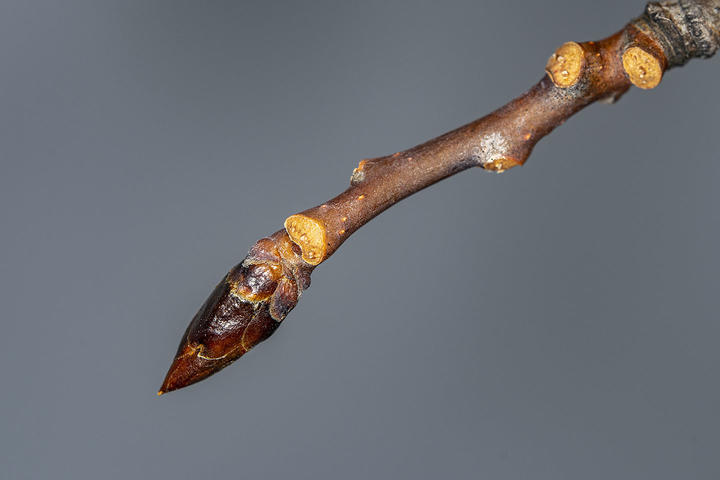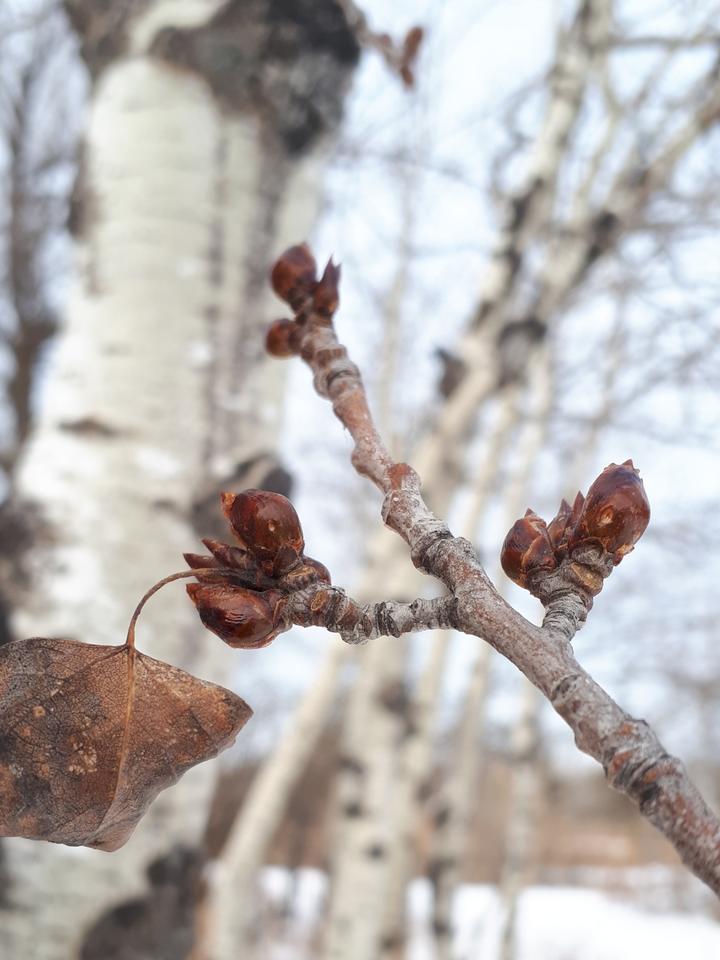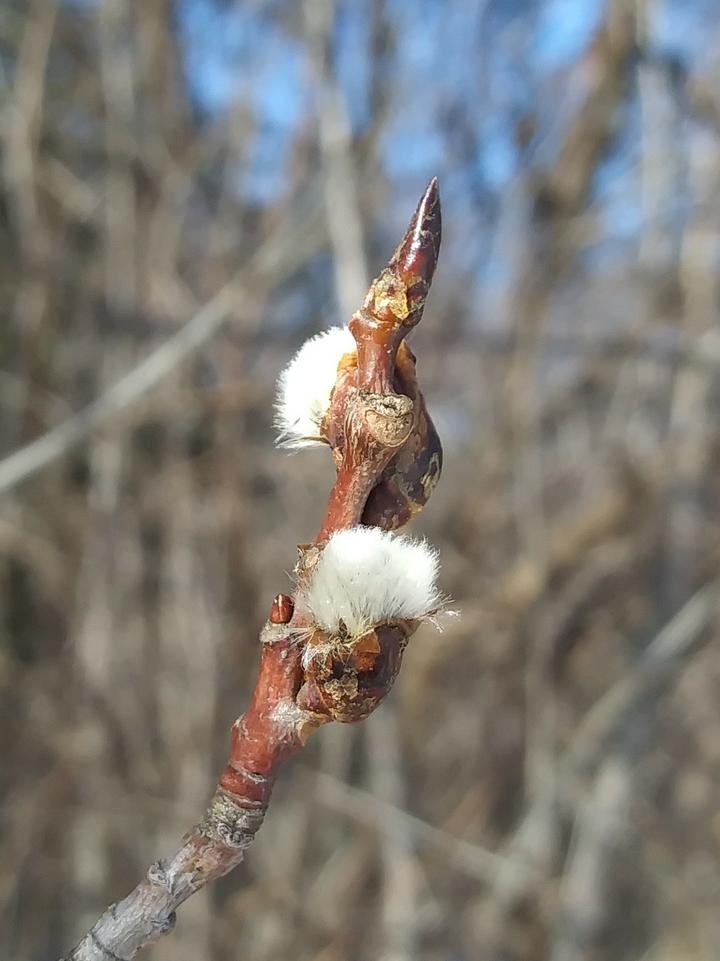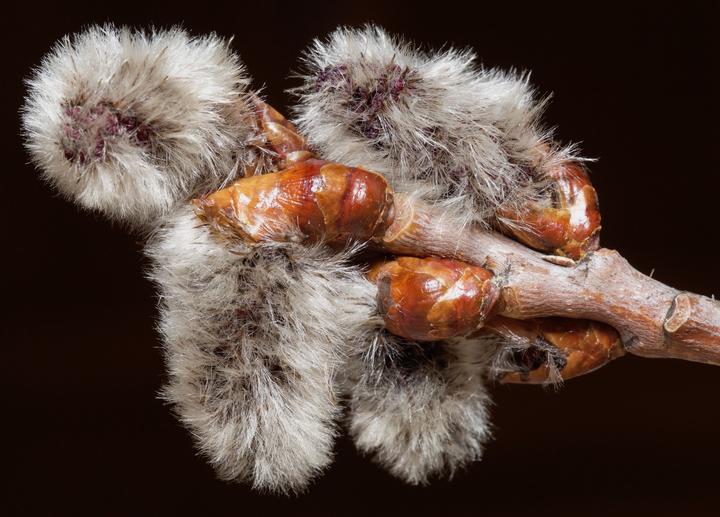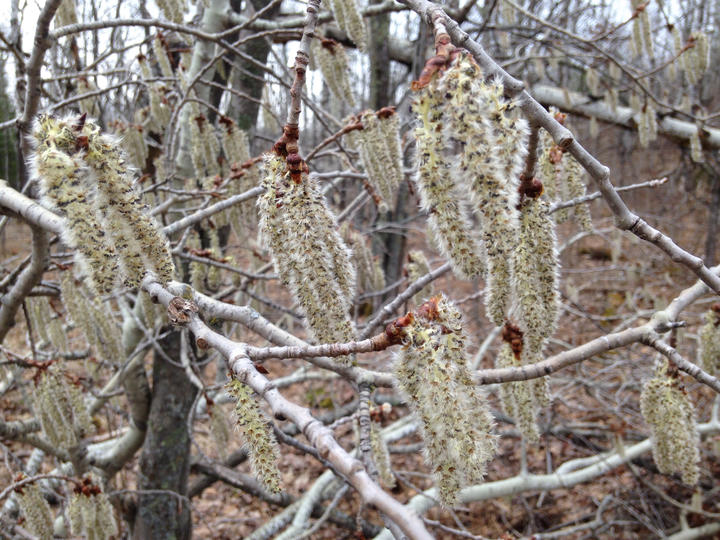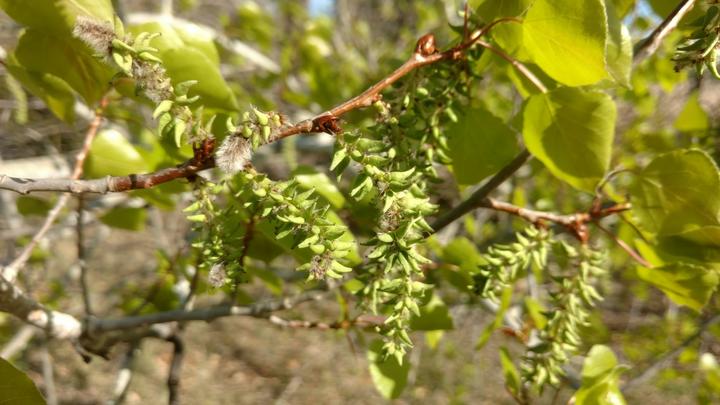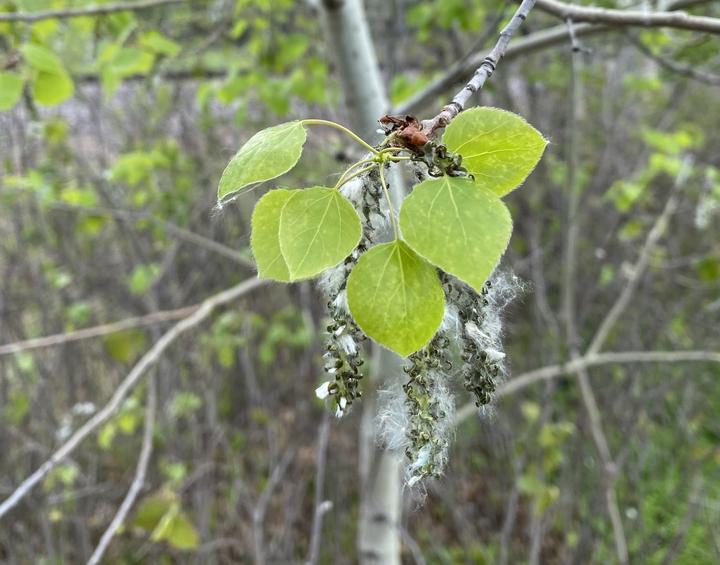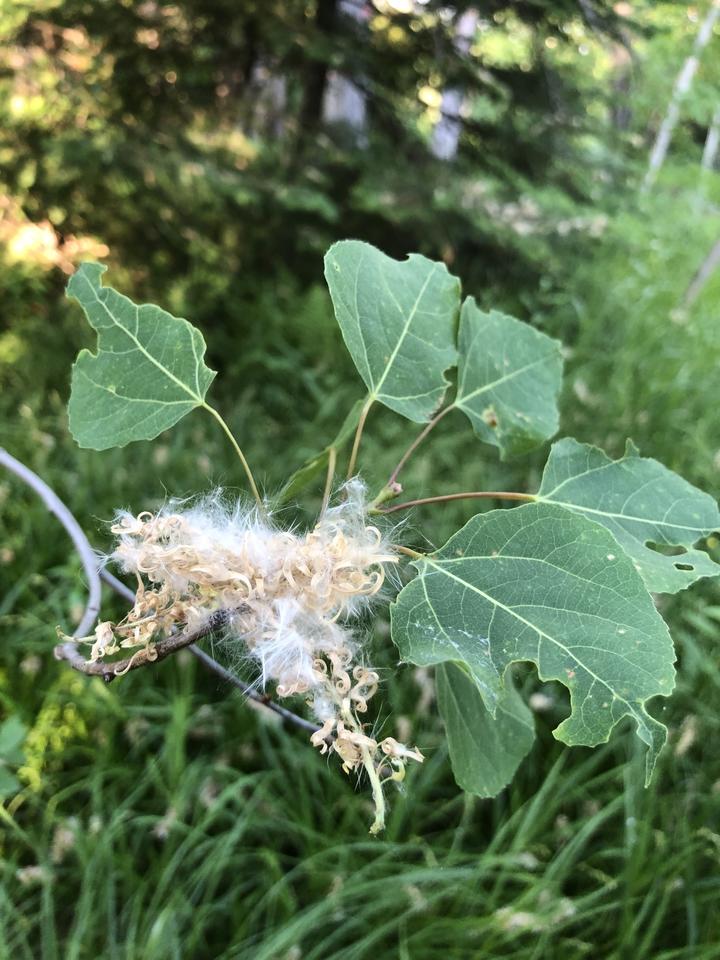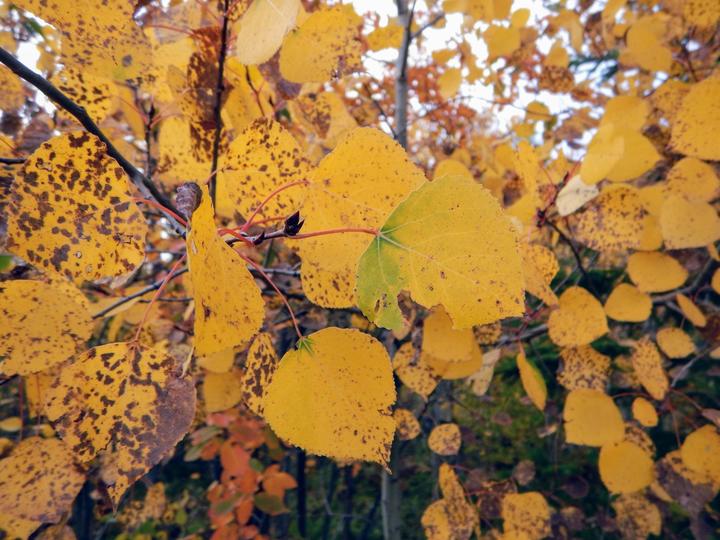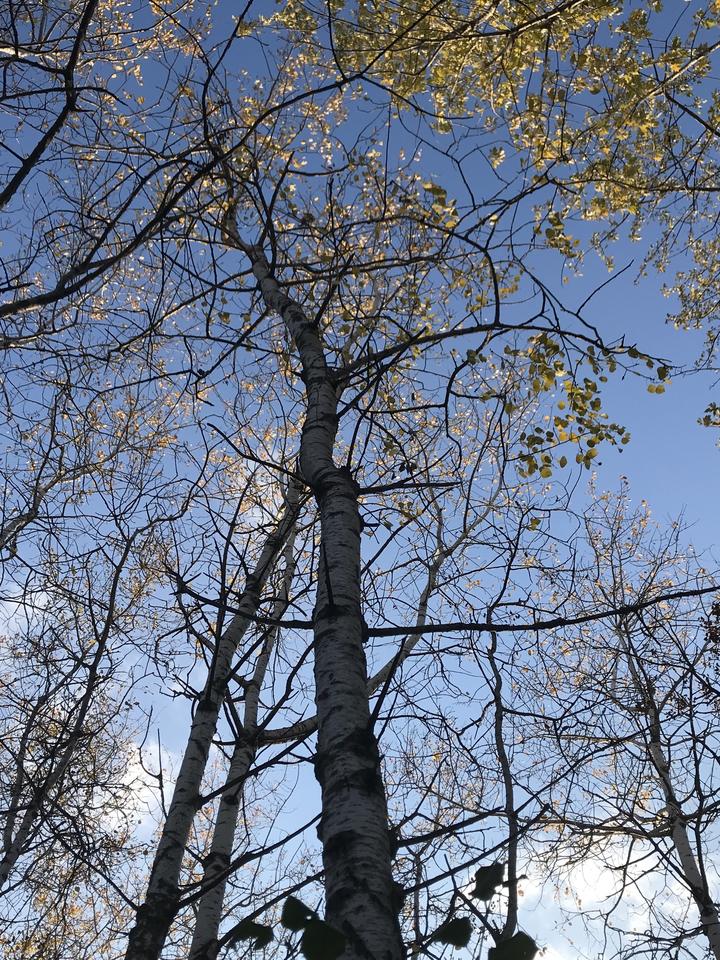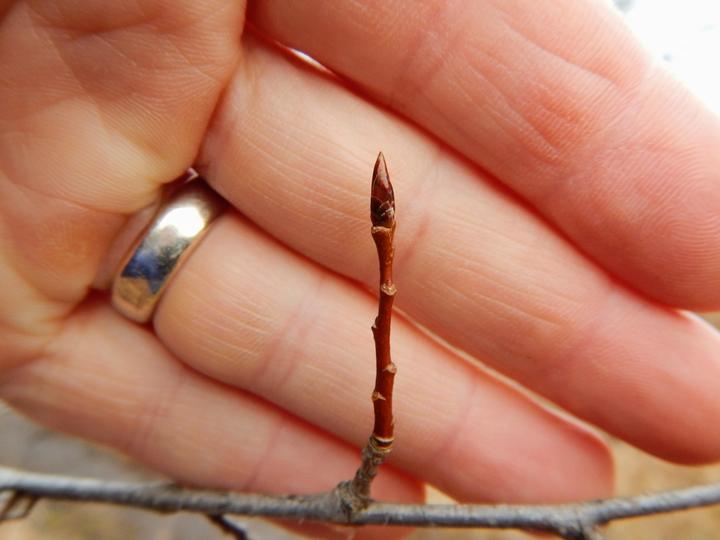More names for this tree
Anishinaabemowin: Azaadi
The Dakota and Anishinaabe were among the earliest people to name Minnesota’s plants and animals, as well as to understand them in relation to Minnesota’s climate and seasons. Those original names are still in use, and several are included on the Season Watch website. However, complete translations were not available.
Latin (or scientific name): Populus tremuloides
The scientific community has a convention of assigning agreed-upon Latin names to every kind of organism. Using scientific names helps people communicate confidently about the same organism and organize lifeforms based on how closely related they are.
More common names: Trembling aspen
Page contents
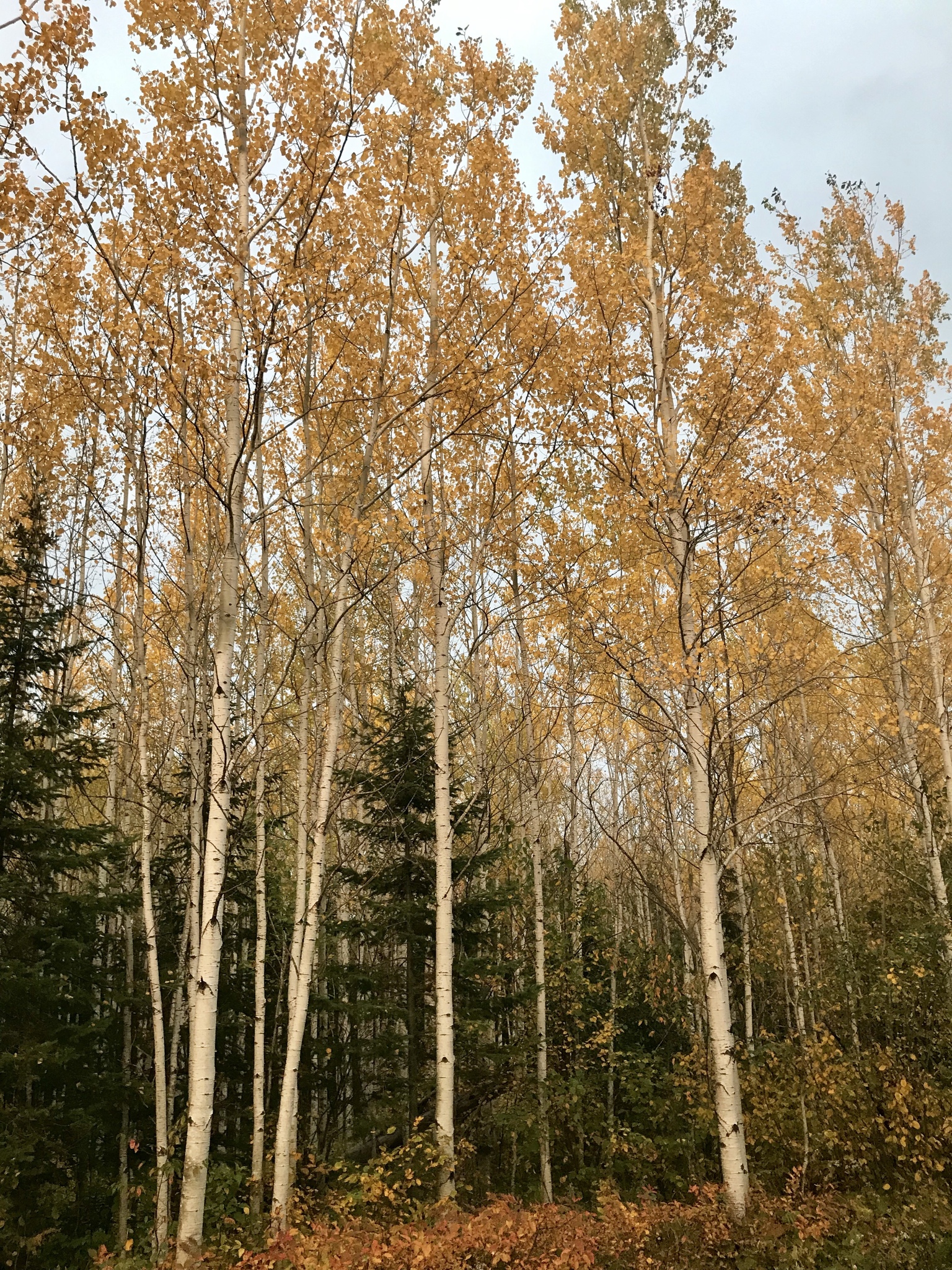
September 18, 2019, Cook County, Minnesota
Photo © Paul Marcum, some rights reserved (CC-BY-NC)
iNaturalist observation
About the quaking aspen
- Quaking aspens can be identified by their white or light grey bark and light green, oval-shaped leaves.
- A short-lived tree, quaking aspen may only live fifty to sixty years.
- The fruits of quaking aspen grow in clusters called catkins. When the fruits are ripe, they look like long, cottony caterpillars hanging off the ends of twigs.
- Quaking aspen is fire-adapted and is one of the first trees to re-sprout after a forest fire.
- In the fall, quaking aspen leaves turn a bright golden yellow.
- Fun fact: The stalk that attaches a quaking aspen leaf to a branch is flat and angled. This creates the shaking or quaking quality of the leaves, giving the tree its name. This may be an adaptation to shake insects off of the leaves.
Visual guide to phenology
Watch for the appearance of leaves, flowers, and fruits. Take notice of when flowers open and fruits ripen.
Note to observers
This page explains general clues to watch for when observing quaking aspen phenology. However, this page does not instruct observers on how to identify this plant or collect data in a standardized way.
- For help with identification, see Minnesota Wildflowers.
- For guidance on collecting data, see Nature’s Notebook.
Graphs and historical data
Note: The Orientation Center provides a map, as well as information on reading graphs; interpreting summary statistics, who collected the data and how; and how to download datasets for independent exploration.
Leaf budbreak
- Earliest: April 5 (occurred in 2012)
- Average: April 28
- Latest: May 20 (occurred in 1997)
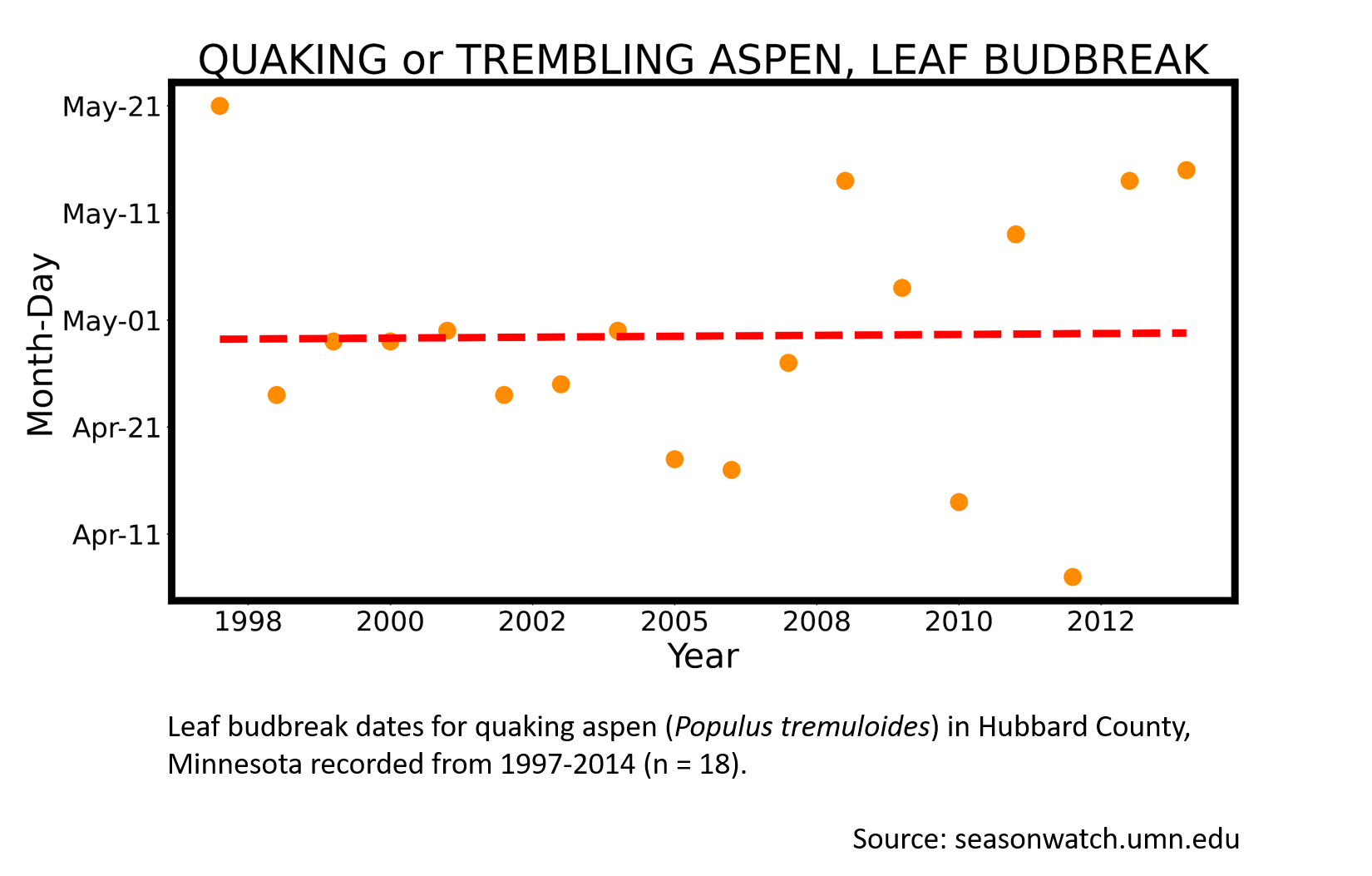
Leaf budbreak
- Earliest: April 2 (occurred in 2012)
- Average: May 1
- Latest: May 17 (occurred in 2014)
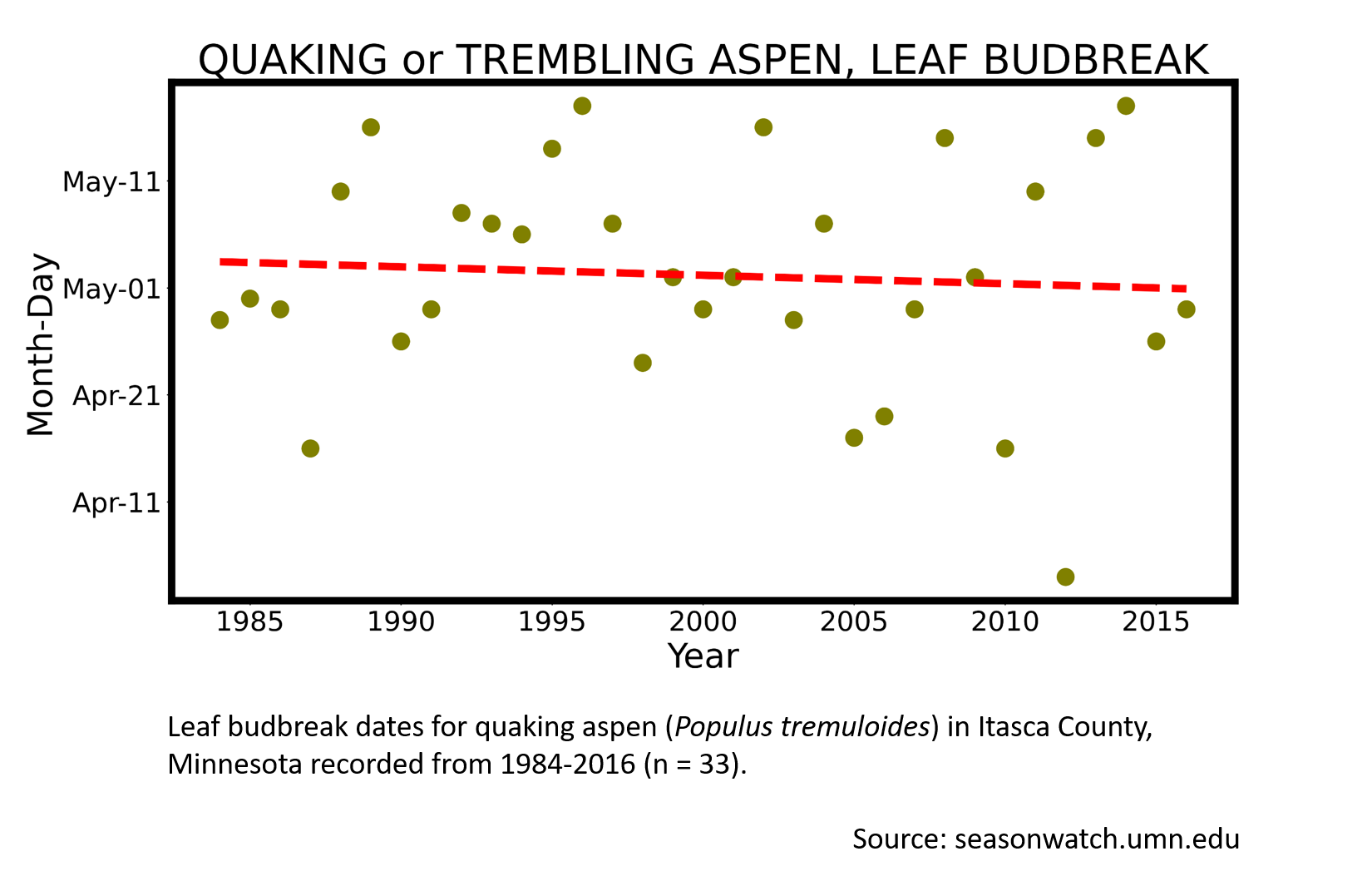
Flowering
- Earliest: February 7 (occurred in 2006)
- Average: May 23
- Latest: April 15 (occurred in 2009)
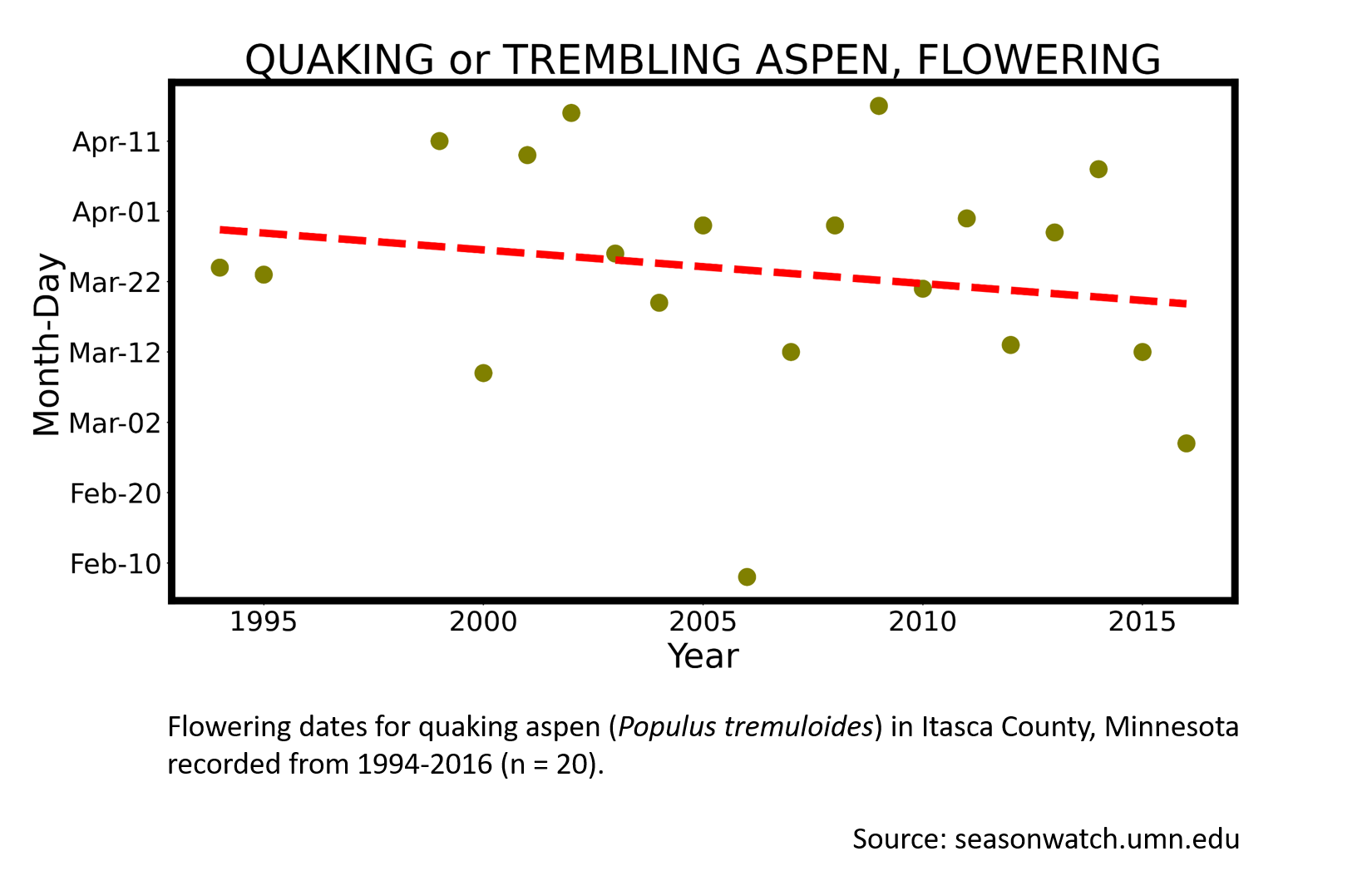
First seed drop
- Earliest: April 24 (occurred in 2001)
- Average: May 20
- Latest: May 31 (occurred in 1996 and 2008)
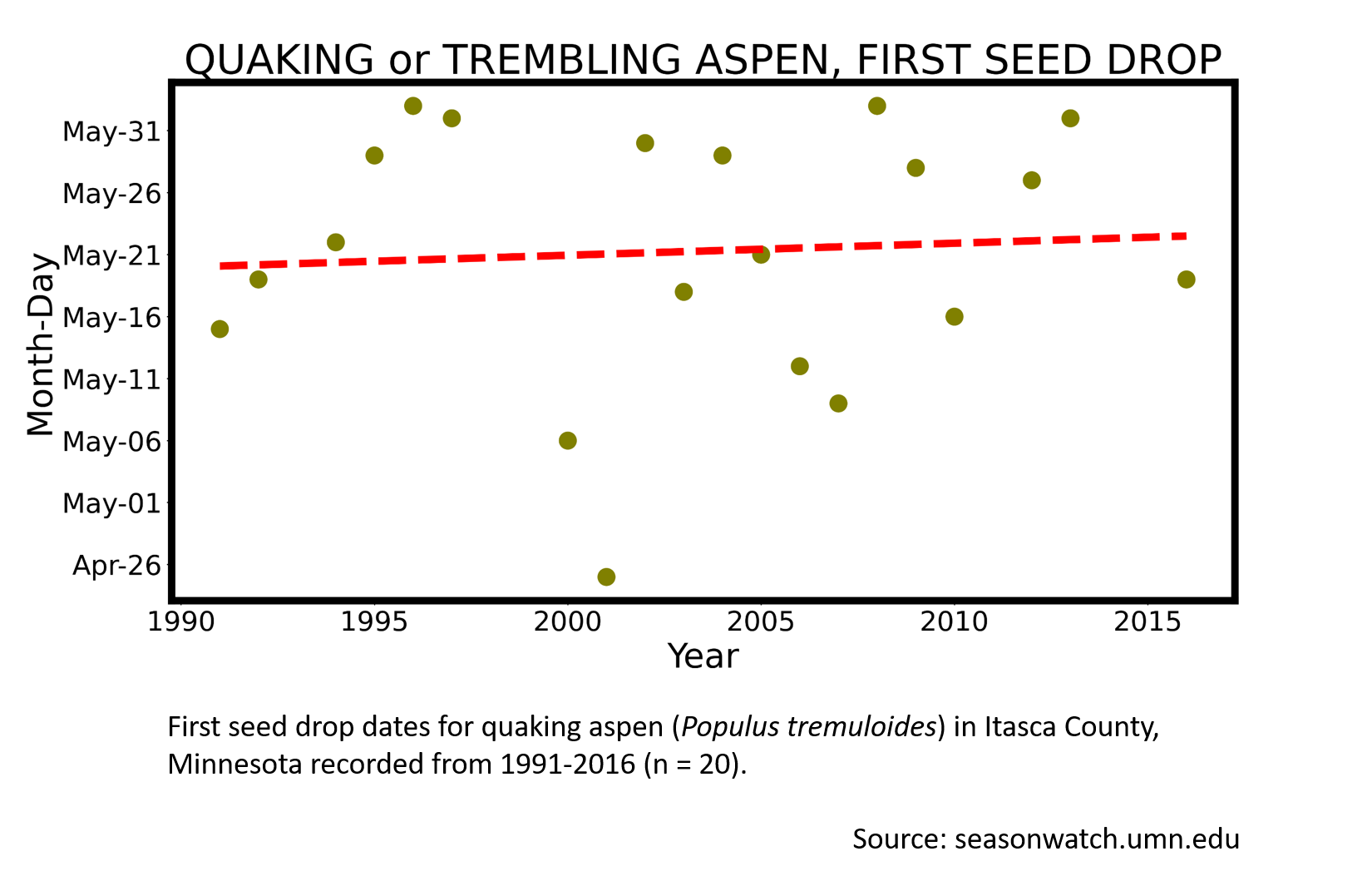
All leaves colored
- Earliest: September 20 (occurred in 1986)
- Average: September 29
- Latest: October 11 (occurred in 1985)
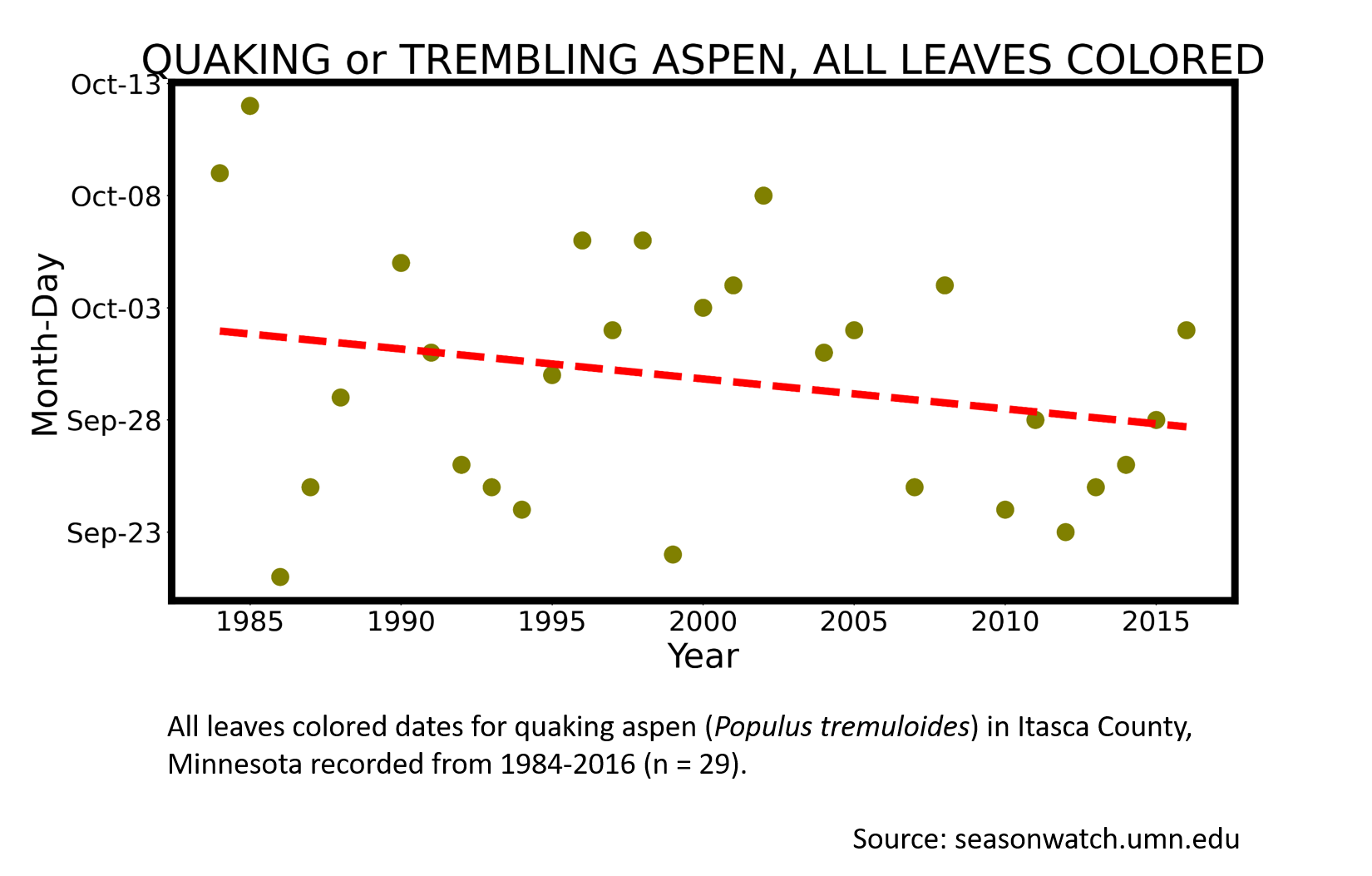
Leaf budbreak
- Earliest: April 10 (occurred in 1987)
- Average: April 29
- Latest: May 16 (occurred in 1950)
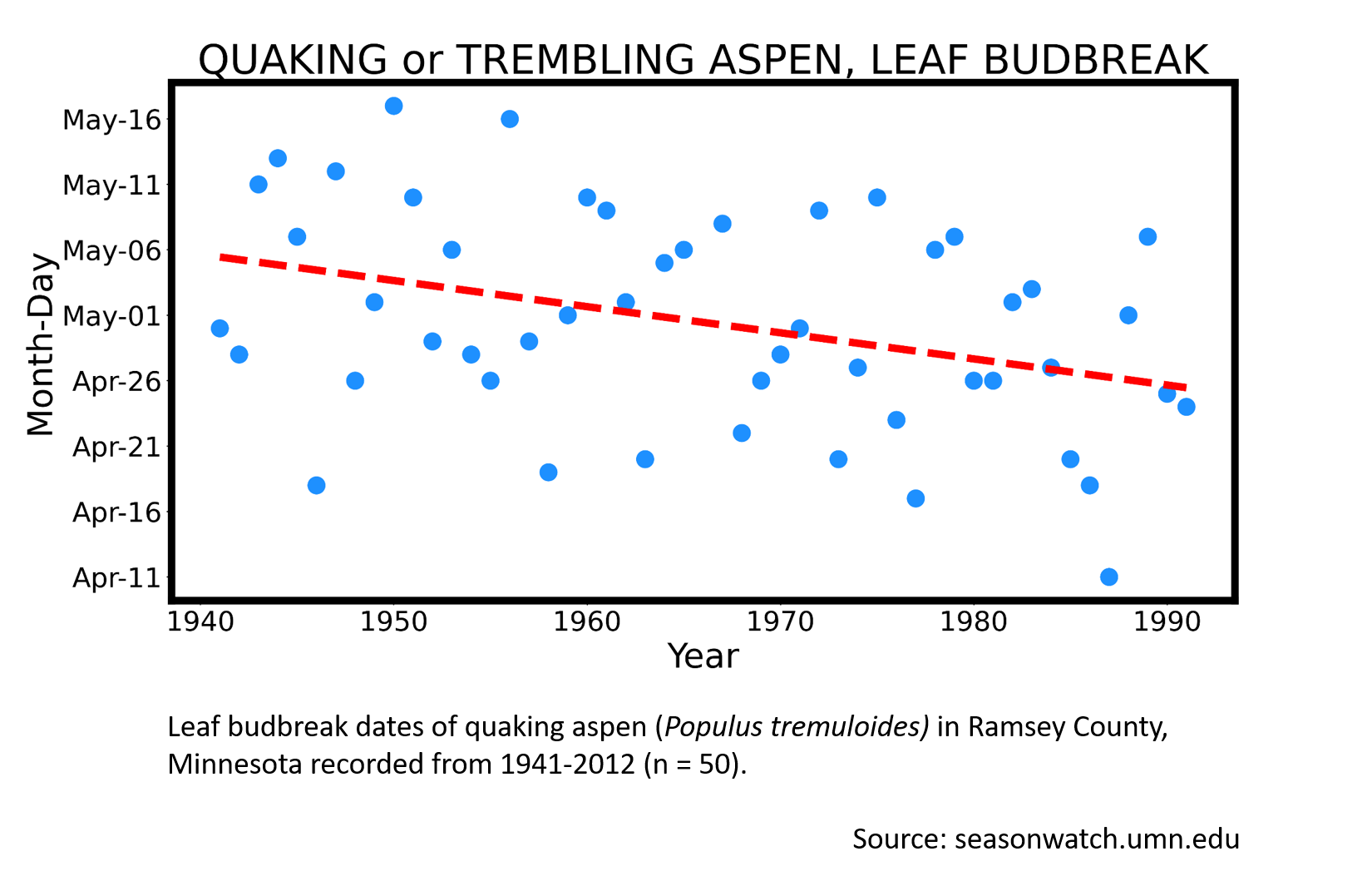
More resources
Listen to KAXE/KBXE broadcasts tagged "aspen"
Quaking aspen (Populus tremuloides) in the Minnesota Biodiversity Atlas
Quaking aspen (Populus tremuloides) in Nature's Notebook
Cold winter temperature can accelerate the timing of spring budbreak, synopsis of a journal publication by Claudia Nanninga, Chris R Buyarski, Andrew M Pretorius, Rebecca A Montgomery (2017) in Tree Physiology 37: 1727–1738.
Keep exploring Season Watch
Keep exploring Season Watch
Co-author: Audrey Negro, Minnesota Master Naturalist
